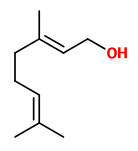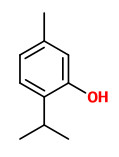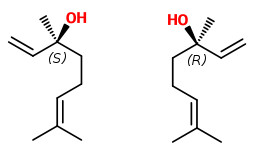Benutzer-Werkzeuge
Citrus kinokuni Hort. ex Tanaka - Rubiaceae - Kinokuni mandarin, kishu mikan, baby mandarin
„The kishu mikan (Citrus kinokuni ex Tanaka) is a hybrid variety of mikan, or mandarin orange (Citrus reticulata), found in Southern China and also grown in Japan. It is not closely related to the common sweet orange, but it is closely related to the mandarin orange… The fruit is also known as Baby Mandarin, Tiny Tangerine, Mini Mandarin and Kishu Mandarin. It is sold under the brand name „Cherry orange“ in Europe. It is shaped like a mandarin, between 25 and 50 mm in diameter. The fruit's orange skin is thin and smooth.“
https://en.wikipedia.org/wiki/Kishu_mikan
„The odor-active volatiles of Kinokuni mandarin (Citrus kinokuni Hort. ex Tanaka), an original mandarin orange in Japan, were characterized by a combination of instrumental and sensory analyses and compared with those of Satsuma mandarin (Citrus unshiu Marcovitch). An aroma extract dilution analysis (AEDA) of the polar fractions of Kinokuni and Satsuma mandarin peel oils identified five odorants in common as the most odor-active volatiles: (Z)-hex-3-enal, decanal, linalool, yuzuol, and (2E)-trans-4,5-epoxydec-2-enal. In addition, seven odorants were identified solely in Kinokuni mandarin as significant contributors: octanal, dodecanal, (2E,4E)-deca-2,4-dienal, geraniol, yuzunone, (2E,7Z)-trans-4,5-epoxydeca-2,7-dienal, and thymol. The odor-active volatiles in both the non-polar components of the peel oil and an extract of the juice prepared from Kinokuni mandarin were also identified. The (S)-isomer of linalool in Kinokuni mandarin peel oil was dominant in the enantiomeric distribution (92%), whereas the (R)-isomer was dominant in Satsuma mandarin peel oil (90%).“
[Miyazawa, Norio, Akira Fujita, and Kikue Kubota. „Aroma character impact compounds in Kinokuni mandarin orange (Citrus kinokuni) compared with Satsuma mandarin orange (Citrus unshiu).“ Bioscience, biotechnology, and biochemistry 74.4 (2010): 835-842]
https://www.tandfonline.com/doi/pdf/10.1271/bbb.90937




